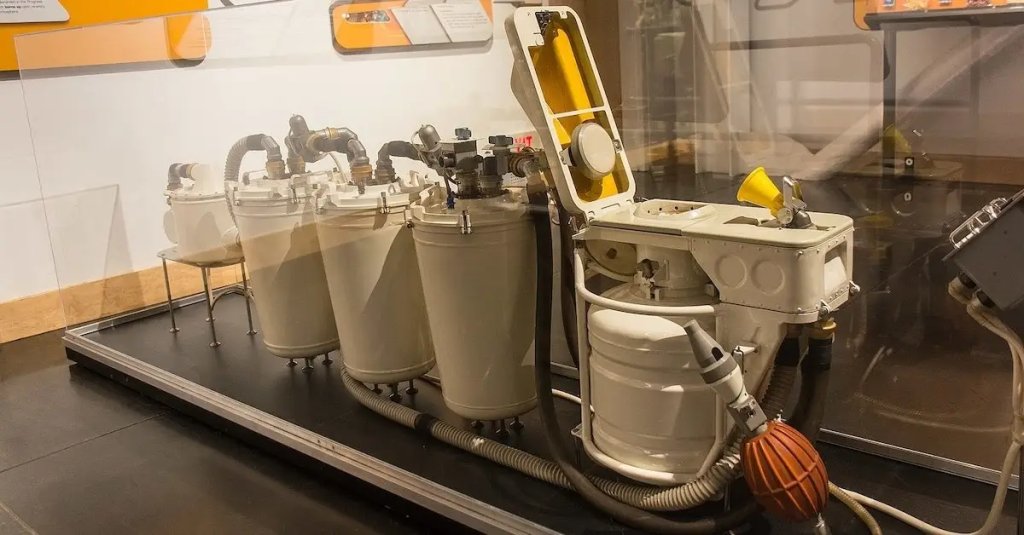

“Let’s talk about peeing in space.” — Mary Robinette Kowal, Hugo-Award Winning Author
During the space race of the Cold War, NASA scientists were so excited to get a man into space, they failed to come up with elegant means for him to relieve himself. As a result, the first American in space, Alan Shepard, was forced to pee in his spacesuit.
At that point in time, NASA wasn’t even considering female astronauts. In fact, women weren’t admitted into the astronaut program until the late 1970s — and it wasn’t until 1983 that Sally Ride became the first American woman in space. “By this point,” observed Robinette Kowal, “the space program was built around male bodies.”
This exclusion wouldn’t be comical except for the fact that male astronauts literally lied about their penis sizes, causing failures in early pee-sheath engineering.
That’s right, our early heroes of space exploration refused to use “small” condoms and would instead pee all over themselves. I don’t blame men for this. I honestly blame toxic masculinity, penis shaming, and lazy men who refuse to learn how to give sexual pleasure to their female partners — but I digress.
The urine-condom technology developed enough to allow for a vacuum to suction the pee out into space, which apparently not only takes some timing skillz but looks pretty cool. The urine will boil violently, then the vapor passes immediately into the solid state and becomes a cloud of very fine crystals of frozen urine that might even catch the light of the sun…
NASA continued to try to contain men’s pee with condoms and bags. After the accident aboard Apollo 13, the astronauts couldn’t use the regular urine vent but the alternate system caused droplets to float around the ship. Mission Control told the crew to stop dumping pee. According to Robinette Kowal, “it wasn’t meant to be a permanent ban, but the crew didn’t understand that. So they were stashing pee in every bag or container possible.”
The fastest option was to store it in the collection bags they wore in their suits. Poor Fred Haise kept his suit on for hours and got a urinary tract infection and a kidney infection.
Male astronauts switched over to the Maximum Absorbency Garment as well because it was more comfortable and less prone to resulting in pee floating around the cabin. This is a great example of how diversity encourages innovation, folks.
Robinette Kowal’s Twitter thread doesn’t stop there. She goes on to cover modern malfunctions, farting in space, the effect of gravity on urination urges, official and unofficial erections in space, and menstrual periods.
(Apparently NASA engineers tied Sally Ride’s tampons together like a bandolier? Guys, if you have period questions, just ask women.)
Today, the International Space System efficiently collects urine and recycles 80-85% of it to astronaut drinking water. Peggy Whitson, an astronaut who hit her “radiation limit” after logging 665 days in space (an American record), suggests that engineers will find a way to create a closed-loop system and recycle all of their water.
So see some International Space Station innovation in action, check out this video of Italian astronaut Samantha Cristoforetti demonstrating their toilet.

International Space Station toilet tour
